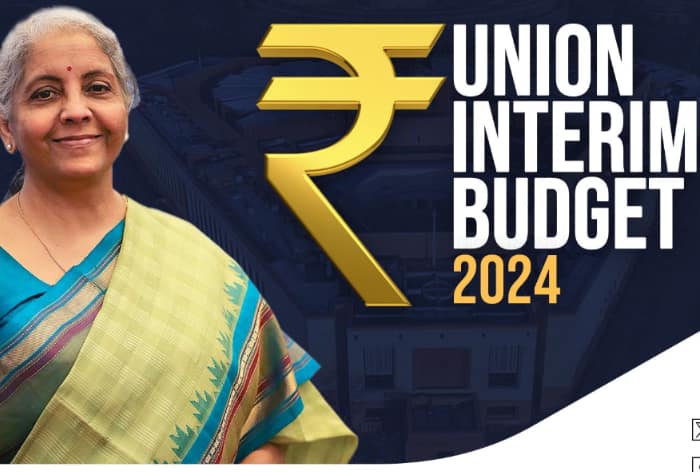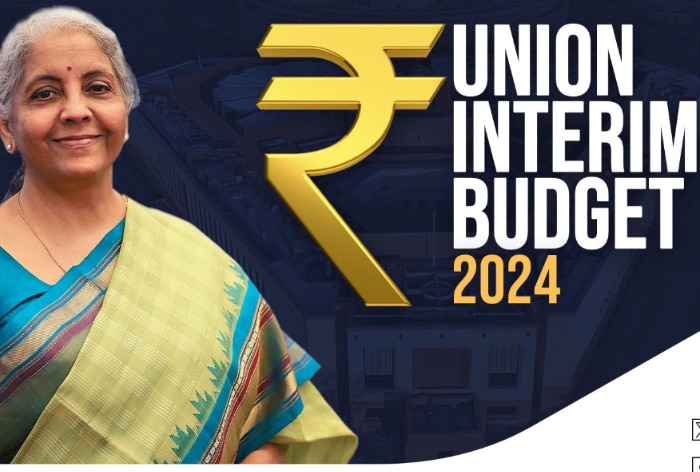Finance Minister Nirmala Sitharaman will on Thursday present the Modi 2.0 government’s last Budget before the general elections.

Budget 2024: Before the country heads for Lok Sabha polls later this year, Union Finance Minister Nirmala Sitharaman will on Thursday table the interim budget 2024-25. This will be her sixth Budget as the Finance Minister and last in the second term of the Modi government. The interim budget will take care of the financial needs of the intervening period until a government is formed after the Lok Sabha polls. A full budget will be presented by the new government. Speaking of budget, increased allocations, implementation of National Education Policy (NEP), scholarships and financial aid, and skill development are a few expectations of a common man from this year’s budget. To find out whether the central government has allocated more funds for the education sector, especially for programs like Samagra Shiksha Abhiyan and in line with the National Education Policy, go through this article.
According to Neelima Kamrah, Principal of KIIT World School, Gurugram, expectations for the upcoming Indian budget 2024 in the education sector revolve around crucial aspects. Anticipating a significant increase in budgetary allocation to bolster educational infrastructure, faculty development, and academic resources, enabling institutions to provide a world-class education. A strong emphasis on technology integration, with allocated funds for digital infrastructure and e-learning resources, is crucial for ensuring our institutions remain pioneers in educational innovation. Prioritizing skill development through industry-aligned programs, supported by budgetary provisions, will enhance students’ practical skills and employability. Increased funding for research projects and interdisciplinary collaborations is crucial for elevating our institutions as hubs of knowledge creation. Anticipating heightened allocations for scholarships and need-based financial aid aims to foster inclusivity and diversity. Adequate funding for modern facilities, including smart classrooms and research facilities, is essential for creating an optimal learning environment. Additionally, hoping for regulatory reforms to simplify administrative processes, providing greater autonomy and fostering innovation and academic excellence.
What is SamagraShiksha? Will Centre Allocate More Funds For Education Sector on Samagra Shiksha Abhiyan, NEP Today?
SamagraShiksha, an overarching programme for the school education sector extending from preschool to Class 12 was formulated in 2017 with the broader goal of improving school effectiveness measured in terms of equal opportunities for schooling and equitable learning outcomes by subsuming the three erstwhile Schemes of SarvaShikshaAbhiyan (SSA), RashtriyaMadhyamikShikshaAbhiyan (RMSA) and Teacher Education (TE). The scheme is in accordance with the Sustainable Development Goal for Education (SDG-4).
On January 2024, the Government approved the continuation of the revised SamagraShiksha Scheme for a period of five years – from 2021-22 to 2025-26 with a total financial outlay of Rs.2,94,283.04 crore which includes a Central share of Rs.1,85,398.32 crore. SamagraShiksha has been fully aligned with the recommendation of the National Education Policy(NEP) 2020.
Speaking of the major objectives of the SamagraShiksha, it helps support States and UTs in implementing the recommendations of the National Education Policy 2020 (NEP 2020). Furthermore, it supports States in implementation of Right of Children to Free and Compulsory Education (RTE) Act, 2009; It focuses on Early Childhood Care and Education; (iv) Emphasis on Foundational Literacy and Numeracy; (v) Thrust on Holistic, Integrated, Inclusive and activity based Curriculum and Pedagogy to impart 21st century skills among the students; (vi) Provision of quality education and enhancing learning outcomes of students; (vii) Bridging Social and Gender Gaps in School Education; (viii) Ensuring equity and inclusion at all levels of school education; (ix) Strengthening and up-gradation of State Councils for Educational Research and Training (SCERTs)/State Institutes of Education and District Institutes for Education and Training (DIET) as nodal agency for teacher training; (x) Ensuring safe, secure and conducive learning environment and maintenance of standards in schooling provisions and (xi) Promoting vocational education.
Speaking of budget expectations, Archana Surana, Director and Founder of ARCH College of Design and Business, Jaipur said that design is a key differentiator and drives innovation at all levels. It is the fastest-growing sector in terms of job opportunities & enterprise development. “For a flourishing creative economy, I believe the government should prioritize the establishment of a National Design Research Fund in the upcoming Union Budget 2024. This crucial initiative would provide essential support for the development of innovative design technologies and methods, alongside developing top talent to address the uncertainties of the future,” she added. To ensure comprehensive development, it is imperative for every state should formulate its own Design Policy framework and set up a Design & Innovation Board to address the local needs of both the organised and unorganised sector. Furthermore, the education ministry should take proactive measures to address the shortage of qualified faculty members in design education, implementing strategies for robust design faculty development. This step is pivotal in overcoming the most significant challenge currently facing the design education sector in India.
Incentivizing collaboration between companies and design institutions through a CSR-like tax incentive would be a strategic move. This incentive would not only benefit companies but also encourage design students to actively engage with industry partners, thereby enhancing their exposure and employability.
PM POSHAN Scheme (erstwhile MDMS) in Schools
The Cabinet Committee on Economic Affairs (CCEA) has approved the continuation of PM POSHAN Scheme (erstwhile MDMS) in Schools for the five-year period 2021-22 to 2025-26 with the financial outlay of central share of Rs.54,061.73 crore for five years from 2021-22 to 2025-26. “During 2023-24 (up to 28th December 2023), Rs. 2571.37 crore has been released to States and UTs as central assistance and 23.61 lakh MT foodgrains had been allocated to them. Also, about 11.56 crore students studying in about 10.65 lakh schools are covered under the PM POSHAN Scheme,” reads the press release. PM POSHAN Scheme Guidelines have been comprehensively revised and several focus areas such as Public Financial Management System, Quality and Safety Aspects, Social Audit, Joint Review Mission, School Nutrition Gardens, Cooking Competitions, TithiBhojan, Supplementary Nutrition in Aspirational districts and districts having high burden of malnutrition, Information, Education and Communication (IEC) etc.
As anticipation builds, all eyes are focused on today’s eagerly awaited announcement to discern whether the central government will allocate increased funds for the education sector, specifically directed towards initiatives such as Samagra Shiksha Abhiyan and the National Education Policy (NEP).

